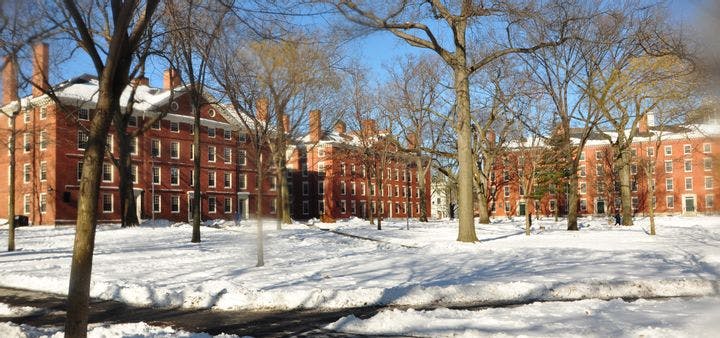Fall 2009
Finding Happiness After Harvard
– The Wilson Quarterly
Unearthing a long-lost study that tracked the Harvard graduating classes of 1942, 1943, and 1944.
Arlie Bock, a brusque Iowan who took over the Harvard University health services in the 1930s, had little patience with the medical establishment’s preoccupation with ill health. He wanted to analyze the forces that produce “successful living.” Selecting 268 students at Harvard (then all-male), he began one of the most comprehensive longitudinal studies in history, tracking students from the classes of 1942, ’43, and ’44. In 1967, psychiatrist George Vaillant stumbled on the largely forgotten study (now called the Harvard Study of Adult Development) and became the “chief curator of these lives” and the author of many books about them, writes Joshua Wolf Shenk, author of Lincoln’s Melancholy: How Depression Challenged a President and Fueled His Greatness (2005).
By 1967, many of the men had become successful, some extraordinarily so. (Most remain anonymous, known by pseudonyms and case numbers.) Four ran for the U.S. Senate, one served in the cabinet, and another became a best-selling novelist. One, John F. Kennedy, became president. But 20 of the men had run into “severe psychiatric difficulties” as early as 1948, and by age 50 almost a third had at one time or another met Vaillant’s criteria for mental illness.
One of the original stars of the Harvard group got off to a good start, but by the time Vaillant tried to contact him he was living a dissolute life, drinking heavily and spouting Latin poetry in public (though his remarkable sense of humor was intact). He explained that he had discovered long-suppressed hostilities toward his illustrious family; others said he never grew up. Before long he was dead. But there was also “Ted Merton,” a “poetic and troubled young man” during his college years who attempted suicide after graduating from medical school. At 35, Merton had a spiritual experience and flowered; at 55, he was hospitalized for depression; a second bout at 60 cost him “his wife, his savings, and his job.” By and large, though, Vaillant says, Merton managed a kind of emotional alchemy that turned adversity into creativity and human connections.
The Harvard men—about half of whom, now in their late eighties, are still alive—don’t fit yes/no categories of successful living. Their lives are too big, too strange, and too full of contradictions, Shenk says.
Vaillant sees the men in terms of their “adaptations” or “defense mechanisms,” the unconscious thoughts and actions that shape a person’s approach to life. These range from the psychotic to the immature (such as passive aggression) to the neurotic (such as intellectualization). The healthiest men exhibit “mature” adaptations. They react to life’s vicissitudes with altruism, humor, anticipation, suppression, and sublimation. Vaillant sums up their attitude with the story of a boy who awakens on Christmas morning to find his stocking full of horse manure and concludes that Santa must have left him a pony, if only he can find it.
Vaillant found a few things that don’t seem to matter to well-being. People who are shy and anxious as children suffer in young adulthood but are just as likely to turn out “happy-well” at 70 as their outgoing peers. There is no link between cholesterol levels at age 50 and health status in old age.
Warm relationships are key to successful aging. For example, 93 percent of the men who were thriving at 65 had been close to one of their siblings earlier in life. Once asked in an interview what he had learned from the study after more than 40 years, Vaillant replied: “That the only thing that really matters in life [is] your relationships to other people.”
* * *
The Source: "What Makes Us Happy" by Joshua Wolf Shenk, in The Atlantic, June 2009.
Photo courtesy of Wikimedia Commons
